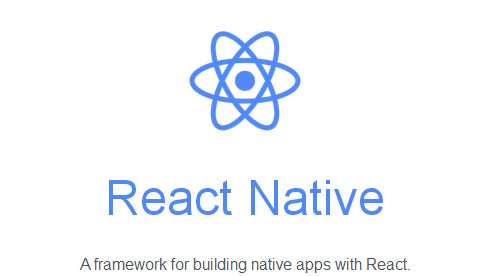iOS開發中的這些權限,你搞懂了嗎?

作者:Jack_lin(公眾號ID:iOSDevSkills)
寫在前面
APP開發避免不開系統權限的問題,如何在APP以更加友好的方式向用戶展示系統權限,似乎也是開發過程中值得深思的一件事。
那如何提高APP獲取iOS系統權限的通過率呢?有以下幾種方式:1.在用戶打開APP時就向用戶請求權限;2.告知用戶授權權限後能夠獲得好處之後,再向用戶請求權限;3.在絕對必要的情況下才向用戶請求權限,例如:用戶訪問照片庫時請求訪問系統相冊權限;4.在展示系統權限的對話框前,先向用戶顯示自定義的對話框,若用戶選擇不允許,默認無操作,若用戶選擇允許,再展示系統對話框。
上述情況在開發過程中是經常遇到的,不同方式的選擇會影響最後用戶交互體驗。這一點感悟正是源於上一周工作遇到的問題:適配iOS10,如何獲取應用聯網權限用以管理系統對話框的顯示管理。當我把這個問題解決後,感覺有必要將常用的iOS系統權限做一個總結,以便後用。
權限分類
聯網權限
相冊權限
相機、麥克風權限
定位權限
推送權限
通訊錄權限
日歷、備忘錄權限
聯網權限
引入頭文件 @import CoreTelephony;
應用啟動後,檢測應用中是否有聯網權限
CTCellularData *cellularData = [[CTCellularData alloc]init];
cellularData.cellularDataRestrictionDidUpdateNotifier = ^(CTCellularDataRestrictedState state){
//獲取聯網狀態
switch (state) {
case kCTCellularDataRestricted:
NSLog(@"Restricrted");
break;
case kCTCellularDataNotRestricted:
NSLog(@"Not Restricted");
break;
case kCTCellularDataRestrictedStateUnknown:
NSLog(@"Unknown");
break;
default:
break;
};
};查詢應用是否有聯網功能
CTCellularData *cellularData = [[CTCellularData alloc]init];
CTCellularDataRestrictedState state = cellularData.restrictedState;
switch (state) {
case kCTCellularDataRestricted:
NSLog(@"Restricrted");
break;
case kCTCellularDataNotRestricted:
NSLog(@"Not Restricted");
break;
case kCTCellularDataRestrictedStateUnknown:
NSLog(@"Unknown");
break;
default:
break;
}相冊權限
iOS 9.0之前
導入頭文件@import AssetsLibrary;
檢查是否有相冊權限
ALAuthorizationStatus status = [ALAssetsLibrary authorizationStatus];
switch (status) {
case ALAuthorizationStatusAuthorized:
NSLog(@"Authorized");
break;
case ALAuthorizationStatusDenied:
NSLog(@"Denied");
break;
case ALAuthorizationStatusNotDetermined:
NSLog(@"not Determined");
break;
case ALAuthorizationStatusRestricted:
NSLog(@"Restricted");
break;
default:
break;
}相冊權限--iOS 8.0之後
導入頭文件@import Photos;
檢查是否有相冊權限
PHAuthorizationStatus photoAuthorStatus = [PHPhotoLibrary authorizationStatus];
switch (photoAuthorStatus) {
case PHAuthorizationStatusAuthorized:
NSLog(@"Authorized");
break;
case PHAuthorizationStatusDenied:
NSLog(@"Denied");
break;
case PHAuthorizationStatusNotDetermined:
NSLog(@"not Determined");
break;
case PHAuthorizationStatusRestricted:
NSLog(@"Restricted");
break;
default:
break;
}![Uploading 144446-b8aca7ba38c5f8c0_695906.png . . .]獲取相冊權限
[PHPhotoLibrary requestAuthorization:^(PHAuthorizationStatus status) {
if (status == PHAuthorizationStatusAuthorized) {
NSLog(@"Authorized");
}else{
NSLog(@"Denied or Restricted");
}
}];相機和麥克風權限
導入頭文件@import AVFoundation;
檢查是否有相機或麥克風權限
AVAuthorizationStatus AVstatus = [AVCaptureDevice authorizationStatusForMediaType:AVMediaTypeVideo];//相機權限
AVAuthorizationStatus AVstatus = [AVCaptureDevice authorizationStatusForMediaType:AVMediaTypeAudio];//麥克風權限
switch (AVstatus) {
case AVAuthorizationStatusAuthorized:
NSLog(@"Authorized");
break;
case AVAuthorizationStatusDenied:
NSLog(@"Denied");
break;
case AVAuthorizationStatusNotDetermined:
NSLog(@"not Determined");
break;
case AVAuthorizationStatusRestricted:
NSLog(@"Restricted");
break;
default:
break;
}獲取相機或麥克風權限
[AVCaptureDevice requestAccessForMediaType:AVMediaTypeVideo completionHandler:^(BOOL granted) {//相機權限
if (granted) {
NSLog(@"Authorized");
}else{
NSLog(@"Denied or Restricted");
}
}];
[AVCaptureDevice requestAccessForMediaType:AVMediaTypeAudio completionHandler:^(BOOL granted) {//麥克風權限
if (granted) {
NSLog(@"Authorized");
}else{
NSLog(@"Denied or Restricted");
}
}];定位權限
導入頭文件@import CoreLocation;
由於iOS8.0之後定位方法的改變,需要在info.plist中進行配置;

配置文件
檢查是否有定位權限
BOOL isLocation = [CLLocationManager locationServicesEnabled];
if (!isLocation) {
NSLog(@"not turn on the location");
}
CLAuthorizationStatus CLstatus = [CLLocationManager authorizationStatus];
switch (CLstatus) {
case kCLAuthorizationStatusAuthorizedAlways:
NSLog(@"Always Authorized");
break;
case kCLAuthorizationStatusAuthorizedWhenInUse:
NSLog(@"AuthorizedWhenInUse");
break;
case kCLAuthorizationStatusDenied:
NSLog(@"Denied");
break;
case kCLAuthorizationStatusNotDetermined:
NSLog(@"not Determined");
break;
case kCLAuthorizationStatusRestricted:
NSLog(@"Restricted");
break;
default:
break;
}獲取定位權限
CLLocationManager *manager = [[CLLocationManager alloc] init]; [manager requestAlwaysAuthorization];//一直獲取定位信息 [manager requestWhenInUseAuthorization];//使用的時候獲取定位信息
在代理方法中查看權限是否改變
- (void)locationManager:(CLLocationManager *)manager didChangeAuthorizationStatus:(CLAuthorizationStatus)status{
switch (status) {
case kCLAuthorizationStatusAuthorizedAlways:
NSLog(@"Always Authorized");
break;
case kCLAuthorizationStatusAuthorizedWhenInUse:
NSLog(@"AuthorizedWhenInUse");
break;
case kCLAuthorizationStatusDenied:
NSLog(@"Denied");
break;
case kCLAuthorizationStatusNotDetermined:
NSLog(@"not Determined");
break;
case kCLAuthorizationStatusRestricted:
NSLog(@"Restricted");
break;
default:
break;
}
}推送權限
檢查是否有通訊權限
UIUserNotificationSettings *settings = [[UIApplication sharedApplication] currentUserNotificationSettings];
switch (settings.types) {
case UIUserNotificationTypeNone:
NSLog(@"None");
break;
case UIUserNotificationTypeAlert:
NSLog(@"Alert Notification");
break;
case UIUserNotificationTypeBadge:
NSLog(@"Badge Notification");
break;
case UIUserNotificationTypeSound:
NSLog(@"sound Notification'");
break;
default:
break;
}獲取推送權限
UIUserNotificationSettings *setting = [UIUserNotificationSettings settingsForTypes:UIUserNotificationTypeSound | UIUserNotificationTypeAlert | UIUserNotificationTypeBadge categories:nil]; [[UIApplication sharedApplication] registerUserNotificationSettings:setting];
通訊錄權限
iOS 9.0之前
導入頭文件 @import AddressBook;
檢查是否有通訊錄權限
ABAuthorizationStatus ABstatus = ABAddressBookGetAuthorizationStatus();
switch (ABstatus) {
case kABAuthorizationStatusAuthorized:
NSLog(@"Authorized");
break;
case kABAuthorizationStatusDenied:
NSLog(@"Denied'");
break;
case kABAuthorizationStatusNotDetermined:
NSLog(@"not Determined");
break;
case kABAuthorizationStatusRestricted:
NSLog(@"Restricted");
break;
default:
break;
}獲取通訊錄權限
ABAddressBookRef addressBook = ABAddressBookCreateWithOptions(NULL, NULL);
ABAddressBookRequestAccessWithCompletion(addressBook, ^(bool granted, CFErrorRef error) {
if (granted) {
NSLog(@"Authorized");
CFRelease(addressBook);
}else{
NSLog(@"Denied or Restricted");
}
});iOS 9.0及以後
導入頭文件 @import Contacts;
檢查是否有通訊錄權限
CNAuthorizationStatus status = [CNContactStore authorizationStatusForEntityType:CNEntityTypeContacts];
switch (status) {
case CNAuthorizationStatusAuthorized:
{
NSLog(@"Authorized:");
}
break;
case CNAuthorizationStatusDenied:{
NSLog(@"Denied");
}
break;
case CNAuthorizationStatusRestricted:{
NSLog(@"Restricted");
}
break;
case CNAuthorizationStatusNotDetermined:{
NSLog(@"NotDetermined");
}
break;
}獲取通訊錄權限
CNContactStore *contactStore = [[CNContactStore alloc] init];
[contactStore requestAccessForEntityType:CNEntityTypeContacts completionHandler:^(BOOL granted, NSError * _Nullable error) {
if (granted) {
NSLog(@"Authorized");
}else{
NSLog(@"Denied or Restricted");
}
}];日歷、備忘錄權限
導入頭文件
檢查是否有日歷或者備忘錄權限
typedef NS_ENUM(NSUInteger, EKEntityType) {
EKEntityTypeEvent,//日歷
EKEntityTypeReminder //備忘
};EKAuthorizationStatus EKstatus = [EKEventStore authorizationStatusForEntityType:EKEntityTypeEvent];
switch (EKstatus) {
case EKAuthorizationStatusAuthorized:
NSLog(@"Authorized");
break;
case EKAuthorizationStatusDenied:
NSLog(@"Denied'");
break;
case EKAuthorizationStatusNotDetermined:
NSLog(@"not Determined");
break;
case EKAuthorizationStatusRestricted:
NSLog(@"Restricted");
break;
default:
break;
}獲取日歷或備忘錄權限
EKEventStore *store = [[EKEventStore alloc]init];
[store requestAccessToEntityType:EKEntityTypeEvent completion:^(BOOL granted, NSError * _Nullable error) {
if (granted) {
NSLog(@"Authorized");
}else{
NSLog(@"Denied or Restricted");
}
}];最後一點
素有獲取權限的方法,多用於用戶第一次操作應用,iOS 8.0之後,將這些設置都整合在一起,並且可以開啟或關閉相應的權限。所有的權限都可以通過下面的方法打開:
[[UIApplication sharedApplication] openURL:[NSURL URLWithString:UIApplicationOpenSettingsURLString]];
上述的權限多為經常用到的權限,當然不會很全面,大家如有需要其他的權限,可以在下方評論,我會及時加上去的。
希望這篇文章能夠給大家的開發帶來一些便利。




